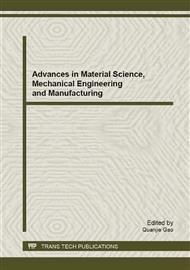p.536
p.540
p.547
p.552
p.556
p.561
p.566
p.571
p.579
A Research on the Application and Calculation of Wind Energy
Abstract:
Nowadays, due to the serious shortage of energy resource, the research and application of new alternative energy has become an important task for each country and government all over the world. In order to protect environment and raise the utilization of marine power, Maritime Environment Protection Committee (MEPC) of International Maritime Organization (IMO) encouraged ship operators to use new alternative energies to reduce marine CO2 emission. Currently, marine new energy technologies mainly include solar energy, wind energy, waste heat recovery and biological substitute fuel. Wind energy, as a clean and easy getting energy, has been paid a high attention to. This paper mainly introduces the basic features and calculation of wind energy, and then put forwards some shortcomings in the application of it on the ships.
Info:
Periodical:
Pages:
556-560
Citation:
Online since:
August 2013
Authors:
Keywords:
Price:
Сopyright:
© 2013 Trans Tech Publications Ltd. All Rights Reserved
Share:
Citation:


